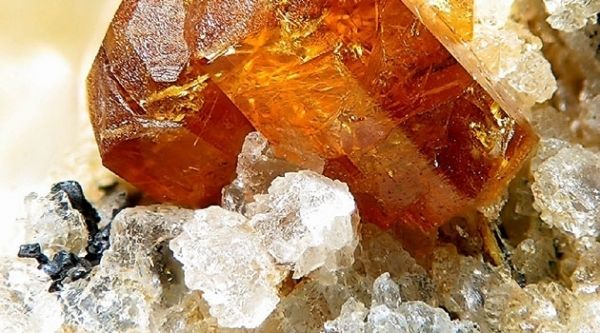In the ancient Bergslagen ore province of central Sweden lies a zone of ‘Bastnäs-type’ rare earth element deposits, and in a new study, scientists from Uppsala University and the Geological Survey of Sweden (SGU) show how these deposits originally formed.
The increasing demand for REEs in a wide range of modern high-tech applications, including applications vital to achieving ‘fossil-free’ transportation and energy production, has triggered a worldwide effort to discover new sources of these critical metals and therefore also a need to better understand how they formed. The ‘Bastnäs-type’ REE deposits in the Bergslagen ore province in south central Sweden were the first hard-rock ores ever to be mined for REEs and played a key role in the original discovery of several rare earth elements (including cerium and lanthanum) and REE minerals (such as the mineral bastnäsite; see photo). These Palaeoproterozoic, skarn-hosted magnetite-REE deposits represent a large-scale (>100 km) feature of high-grade REE concentrations, the ‘REE line’ in Bergslagen, south central Sweden. An improved understanding of their origin could help to guide exploration for this type of REE mineralisation here and elsewhere to secure the future supply of these critical commodities.
To unravel the formation of ‘Bastnäs-type’ REE deposits, robust constraints on the nature of ore-forming processes and fluids were needed.
Continue reading at Uppsala University
Image via Uppsala University


